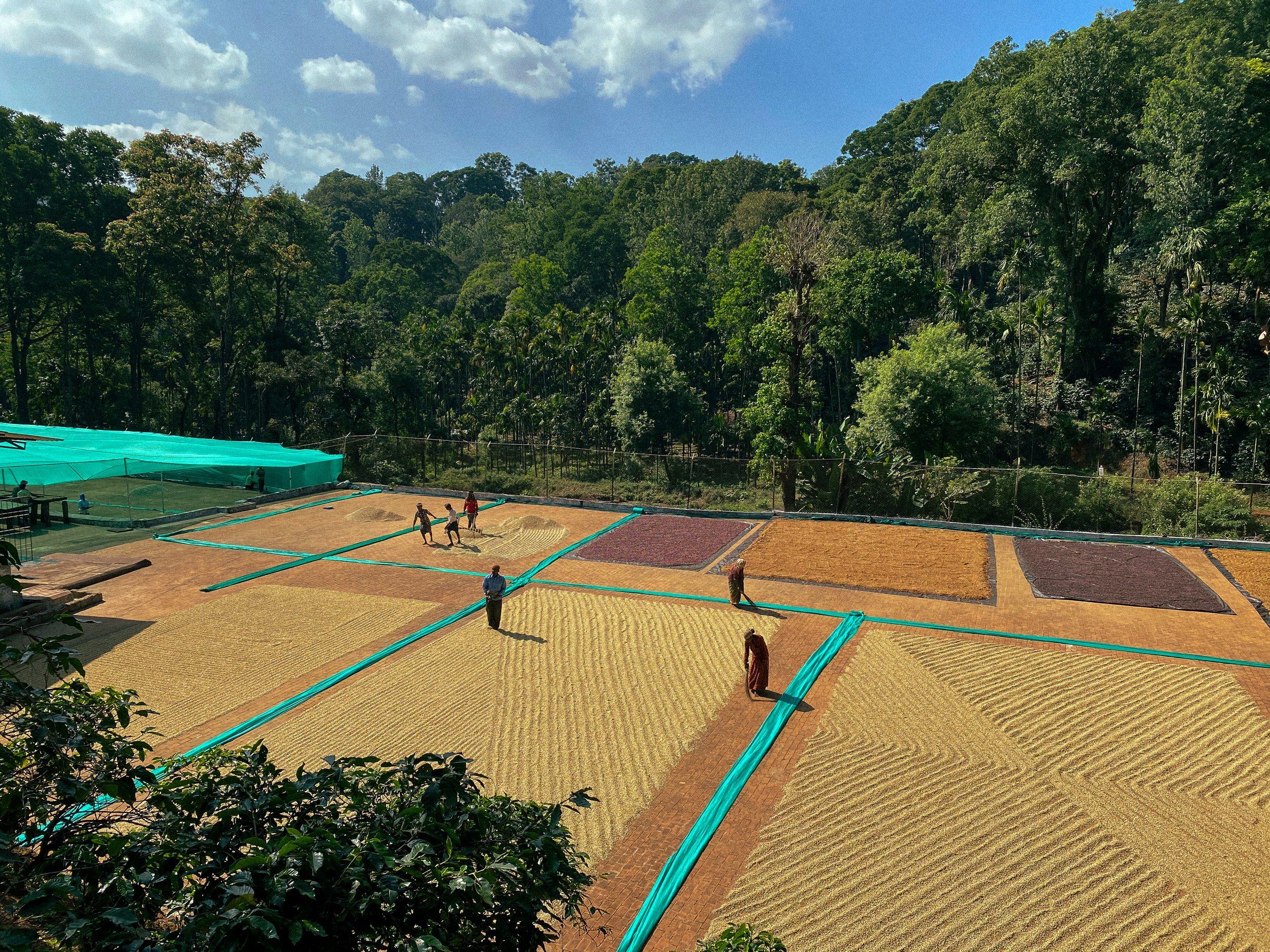
Nurturing the best of Indian specialty coffee from 4 biodiverse farms
SANGAMESHWAR
COFFEE ESTATES
Est. 1957
The key to specialty, what it takes…
Karadykan Estate
Karadykan is situated in the Bababundan-giris at 1200 - 1400 MASL. This 320 hectare farm, receiving about 100 inches of rainfall a year is surrounded by three hills and fed by various natural springs. An abundance of wild animals, most prominently the Indian gaur and the spotted deer, roam in herds. The farm grows arabica - Sln.9, Sln 795, HDT*Catuai, Chandragiri and Catimor; canephora - Peradeniya, C*R and Sln 274; and liberica. The wet mill houses a century-old 12-foot water wheel, generating hydroelectric power for coffee pulping. Karadykan has an in-house 20 bed hospital and day creche to support the 75 families living on the farm.
Gungegiri Estate
The British brothers WL Crawford and CS Crawford cultivated coffee for the first time in Gungegiri in 1890. The hills of this 200 hectare farm have numerous streams and springs flowing through, acting as copius water sources during summers, hence the name ‘Ganga’.
The farm receives about 80 inches of rainfall annually. At 1200 -1450 MASL, both arabica and robusta varieties of coffee grow under the shade of indigenous tree species like Atti (Fig), Basari (Grey Fig or Java Fig) and Neeruli (Tree Onion). The wild fauna gives rise to nuanced flavours in the cup, making Gungegiri naturals a hit with roasters worldwide. Th estate is a haven for a large number of peacocks and spotted dear amongst other species and there also exists an ancient Shiva temple on one of the hills.
Attikan Estate
Randolph Hayton Morris, a Scott who is believed to have ridden on horseback from Conoor in the Nilgiris, had a love affair with the Biligiri Rangan Hills and couldn’t resist their allure. In 1887, he obtained sizeable forest waste land from the Coimbatore Collectorate and under harsh circumstances, he opened the estate, “the Attikan” in 1890.
The name Attikan has its origins from the vast range of wild fig trees (“Atti” in local language) which exist in plenty and influence the coffees with its unique flavours. The estate at 1600 MASL, is the highest altitude where coffee grows in South India and is flanked by a reserve forest, home to tigers, leopards, elephants, Indian gaur, black bear, spotted deer and wild native fauna along with natural wind belts. Attikan, spread over 150 hectares, grows Arabica Sln 9, Sln 795, Catimor, Kent, Yellow Catuai and Chandragiri, among other varieties. The estate has also been the lair of the deceased bandit Veerapan, adding to its mystery.
Biccode Estate
Biccode estate, a 150 hectare coffee and pepper plantation, near Belur was originally promoted by an Englishman named Clement Lake. The Biccode bungalow was built in 1906, with Lake and his wife staying at the estate until 1935 with their son Robert. At 950-1180 MASL, receiving about 60 inches of rainfall each year, both arabica and robusta are grown here. Situated ideally at the start of the coffee belt in Karnataka, the farm produces some award-wining natural coffees. It also grows avocados in plenty.
We recently touched up this colonial gem and opened it as a heritage homestay in 2023 for people to truly experience coffee completely - after all, a good coffee experience is rarely about coffee, but more the people, mood, nature, place, hospitality or just a good day! “Biccode Woodside Heritage” gives an opportunity to rewind and immerse in serenity where one can pause, breathe and savour each moment.





























